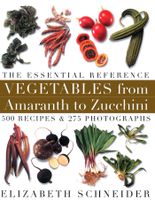Advertisement
Yam, True Yam
Dioscorea species
Published 2001
Also
ñame (Spanish) ,igname (French) (See alternative names under separate species)
In most of the United States, however, yams are odd nameless tubers—unless you grew up with them elsewhere and know their secrets. In 1999, the United States imported yams from 14 countries—many of which now have an increasing population here. What types arrive is dictated by the demands of newcomers from Jamaica, Nigeria, the Philippines, and a score of countries where yams—not potatoes—mean dinner. Yams that wind up in the NewYork—New Jersey area, where I live and lug them home, represent a tiny fraction of the tuber’s numerous forms. Franklin Martin, this country’s primary authority on the subject (who was kind enough to interrupt his active “retirement” to review my information), says that 60 Dioscorea species are edible and 10 are prominent.


